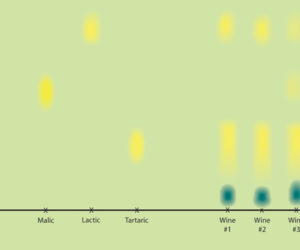Q
I had a great Riesling going this vintage, but now I’ve stuffed it up. I nursed it along until the last racking, when I seem to have put in an overload of sulfite. I nearly killed a judge at the Eltham show. They are threatening to sue. I realize it’s my own fault — I had just downloaded the WineMaker sulfite calculator, but I hadn’t used it. Silly me. Is there some way of aspirating the sulfite to remove it? Quickly? How do I rehabilitate the lovely Riesling I used to have?
Graham Scott
Moe South, Victoria, Australia
A
My, my, my! I sincerely hope you are joking about that lawsuit — first, because I certainly hope you are under no impending financial harm, but also because I’d assume no home winemaking judge would really sue for such an honest (and relatively common) mistake!
Whatever the situation, my advice might appear to be not so much advice as perhaps a “that’s just the way it is” statement of fact. The truth is that you can’t really remove sulfur dioxide easily from wine. There is no process, no fining agent and no additive that removes large amounts of sulfites from wine except time and the nature of the wine itself. (Small amounts of sulfites can be removed with hydrogen peroxide. See “Kit First Aid” in the December 2002-January 2003 issue.) Free sulfur dioxide, or unbound sulfur dioxide, will eventually decrease in concentration and will become less detectable with time. This is because sulfur dioxide, over time, binds up with oxygen, aldehydes and sugars (among other things) in wines and become part of what is called “total sulfur dioxide.” This is much less volatile and thus much less sniff-able. I don’t know where the free sulfur dioxide levels of your wine are currently sitting, but if they are under 70 ppm or less, I think there is hope. (If not, down the drain with it.) Many German or Austrian Rieslings are bottled with free sulfur dioxide levels this high and, over the period of about a year, come down to drinkable levels. Give your wine some time. Pop a bottle in a month or two and see what you think. Your wine might grow to be drinkable just in time to celebrate the end of your libel counter-suit.

Q
I was thinking of adding oak chips in cheesecloth to a gallon carboy of red Zinfandel for one month; any experience with this?
Pierre Desocio
Syracuse, New York
A
I firmly believe that — much like Sauternes and foie gras, Port and blue cheese — oak chips and cheese cloth were always destined for each other. Many winemakers, from purveyors of thousand-gallon commercial lots to 10-liter demijohnners, take advantage of homemade oak chip “tea bags.”
I’ve been advocating their use for years as they make the winemaking process easy in so many different ways. The only trick is to find a way to get that package of cheesecloth-enrobed chips into your carboy, which likely has a small neck. If you’ve got a needle, thread and some scissors, however, you can easily sew yourself some long, narrow cheesecloth “socks” that will fit the bill nicely. Try cutting out a few layers of cheesecloth into strips measuring 12” (30 cm) by 4” (10 cm). Fold lengthwise, sew up one of the shorter ends, then sew up the open long side once you’ve laid a good layer of chips down the middle of this cheesecloth “burrito.”
The resulting long, narrow cheesecloth tube should be able to fit down into the mouth of your carboy, depending on how narrow the neck is. Tie the open end off with some thread and leave it hanging out over the edge of your carboy before you bung it up tight. Hey presto! You’ve got oak chips that are easy to remove and re-use if you so desire!







